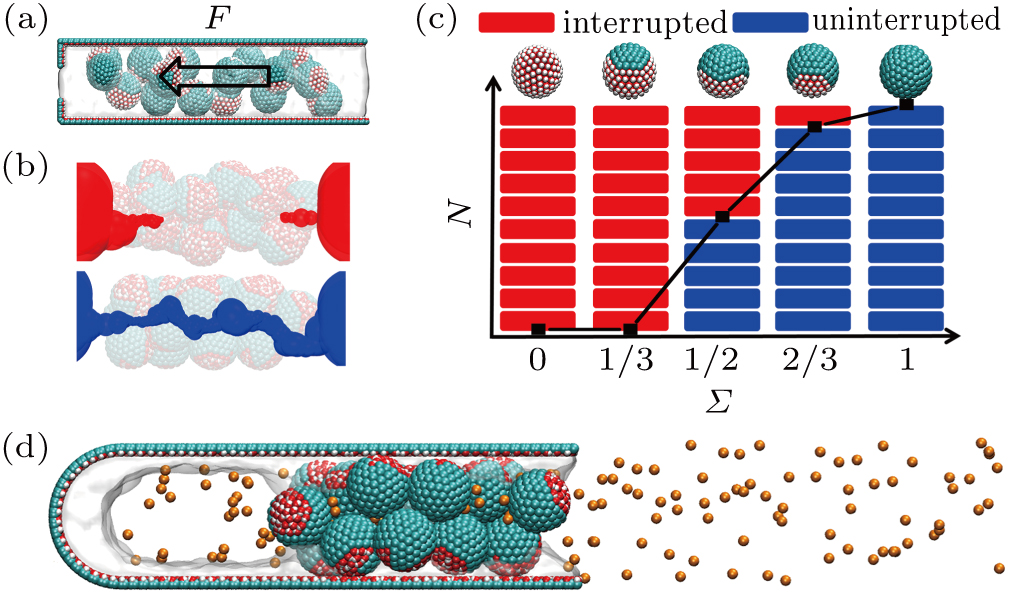Hydrophobic nanochannel self-assembled by amphipathic Janus particles confined in aqueous nano-space
(color online) Proportion of forming an uninterrupted hydrophobic nanochannel inside the self-assembly particle configurations and its application in enhancing the gas permeation. (a) Initial configuration of the first set of simulations. The system is composed of fracture and 16 particles socked in the water (OH groups: red and white, carbon atoms and CH3 groups: green). The water is represented by the transparent part. A small force towards the left side has been applied to the particles. (b) Example of forming interrupted and uninterrupted hydrophobic nanochannels inside the particle assemblies. The red and blue segments stand for the interrupted and uninterrupted nanochannels, respectively. (c) Number of the systems forming interrupted and uninterrupted hydrophobic nanochannels inside the aggregated particle configurations for each kind of particle in all 10 sets of systems. Red and blue blocks denote the number of the system forming interrupted and uninterrupted nanochannels, respectively.
